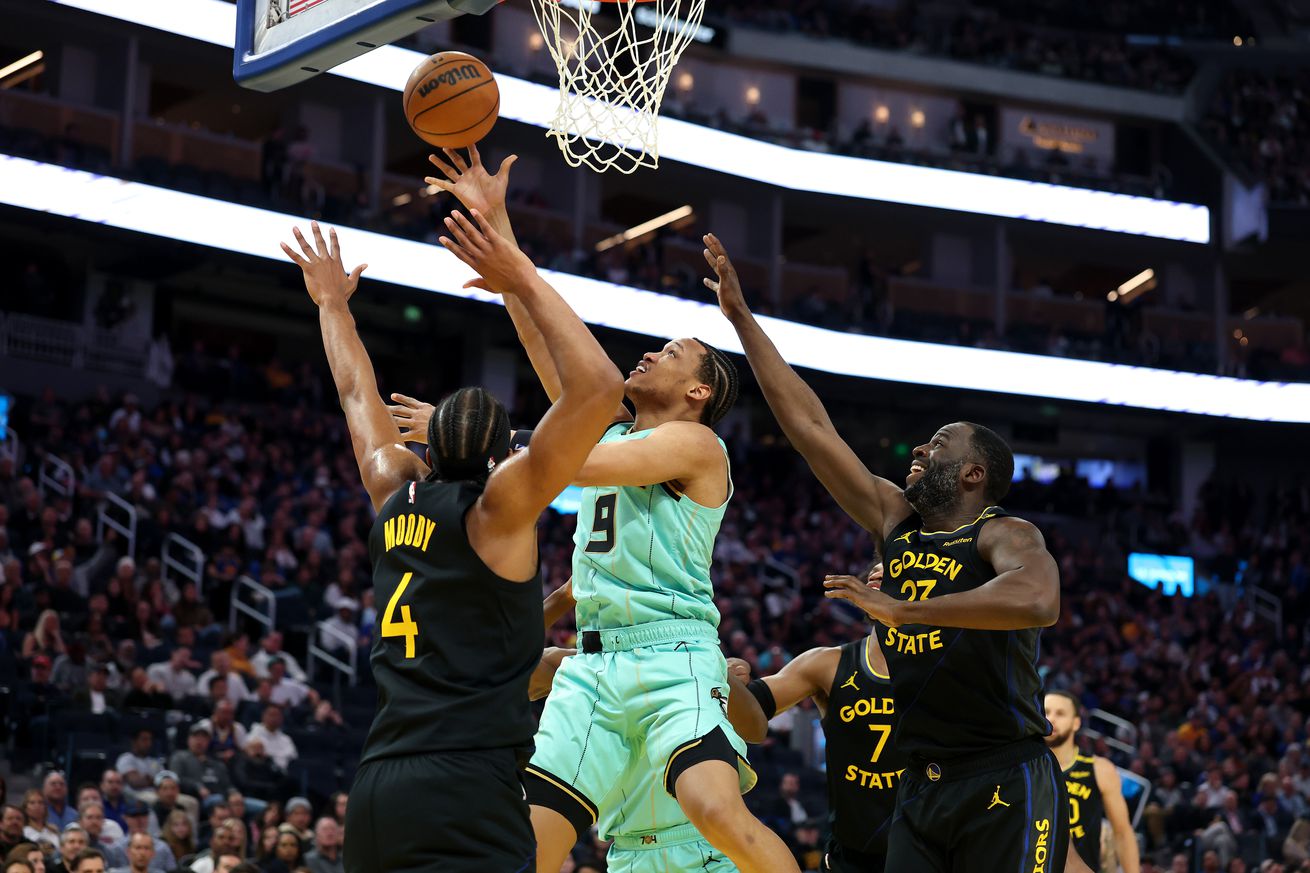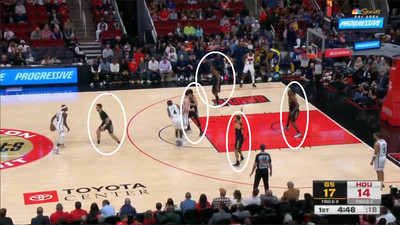
Dubs are now 6-1 in the Jimmy Butler era.
Amid widespread talks of the perceived narrative that today’s modern NBA isn’t at all versatile in terms of playstyle and variety (a notion I highly disagree with — and one not backed up by meticulous film study), most have largely ignored the defensive end of the floor in such discussions. When the old illegal defense rules were shelved in favor of the defensive three-seconds rule before the 2001-2002 season, it opened the door to a whole-new type of defensive strategy that was previously prevalent in high school, college, and international pro leagues: zone defense. Over the course of twenty years, the NBA’s version of zone defense has evolved from a mere afterthought using “vanilla” schemes (e.g., 2-3 zone) to configurations that are more complex in its formations and are more expertly executed than past versions.
The Golden State Warriors aren’t the most frequent users of zone defense in the league — that distinction goes to the Miami Heat, who spend 13.5% of their defensive possessions in some sort of zone configuration, per Synergy. In contrast, only 1.5% of the Warriors’ defensive possessions have involved some type of zone defense, 19th most frequent. Assistant coach and de facto defensive coordinator Jerry Stackhouse has largely been conservative in his zone usage, opting instead to have his wards defend man-to-man, and — at least, during the early part of the season — apply aggressive coverages at the point of attack.
However — starting from a few games prior to Jimmy Butler’s acquisition from the Heat — Stackhouse has seemingly opted to ramp up the Warriors’ zone usage. Historically under Steve Kerr (with former defensive coordinators Mike Brown and Kenny Atkinson), the Warriors have employed some of the more “traditional” zone formations: a run-of-the-mill 2-3 zone, a 1-2-2 formation that employs a man up front to cover the ball handler, and a 3-2 zone that drops the man up front to align himself with the middle two defenders.
But the Warriors’ recent zone reps have seen a different kind of zone, one not seen all too often at the NBA level:

This 1-3-1 zone is, in several ways, similar to the 1-2-2 in that it employs a lone man up top to cover the opposing ball handler. Oftentimes, that lone defender is tasked to pressure the ball the full length of the court, which can disrupt an offense’s rhythm, delay half-court sets, and allow teammates to set the defense properly.
The defender in the middle of the three-man formation is tasked to defend and physically mark the offensive man in the middle whose role is to act as the pressure release against the zone; the other two surrounding the middle man are mobile movers who should be able to cover the slot and wing areas. The lone man underneath the rim positions himself according to where the ball is: right underneath the rim when the ball is up top, and slightly toward the short corners whenever the ball is at the wing or corner. Of course, when the ball finds itself in either blocks/low post, his role turns into man coverage against post ups.
Against a team such as the Houston Rockets who have an infamous reputation for having difficulty creating offense in the half court, zones can be a useful weapon to unholster:
Just like all kinds of zone formations, the 1-3-1 can be vulnerable to offensive rebounds, due to the lack of matching up and not having someone to box out. Furthermore, having only one backline defender means the defense is particularly vulnerable to board crashes from multiple directions, most especially from the corners.
Which is why it’s important to have a rebounder such as Kevon Looney stationed in the backline to account for that particular weakness:
This change-of-pace tool has a rather oxymoronic goal: in putting pressure on the ball and delaying an offense’s ability to get into their sets, it can compel them to speed themselves up and force them into the trap of rushing things — which increases the likelihood of committing mistakes.
Against the Charlotte Hornets — bereft of their main offensive creator in LaMelo Ball and sorely lacking in offensive options behind him (with Brandon Miller out for the season due to having surgery on his right wrist) — the Warriors had an opportunity to experiment with different defensive looks. The 1-2-2 zone made a brief reappearance during one defensive possession, one that morphed into a 3-2 zone as the ball made its way past the half-court mark:
But the Warriors’ trendy bread-and-butter 1-3-1 composed a majority of their zone possessions against the Hornets, who scored a paltry 0.444 points per possession against nine instances of the Warriors’ zone. The lack of Ball and Miller certainly didn’t help them in trying to bust the Warriors’ wall:
In the seven games of the Warriors having Butler playing for them, the Warriors’ defense — boosted by an uptick in zone usage — have limited opponents to 104.4 points per 100 possessions (first in the NBA over that period), 91.8 points per 100 half-court possessions (third over that period), and have an opponent turnover rate of 19.8% (also first over that period). Forcing more turnovers and stops has allowed them to up their transition opportunities on offense; in turn — whether on the primary break or on the secondary break — they have been able to create offense against non-set defenses.
In that regard, the game of basketball is simple: being able to force more stops allows one to dictate terms on offense. The Warriors — seemingly rejuvenated, re-energized, and primed to sneak into the playoffs — have been in a zone, figuratively and literally.